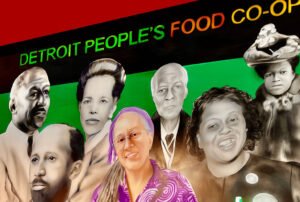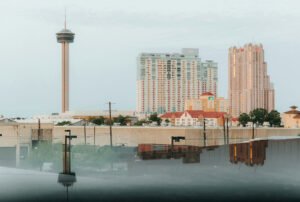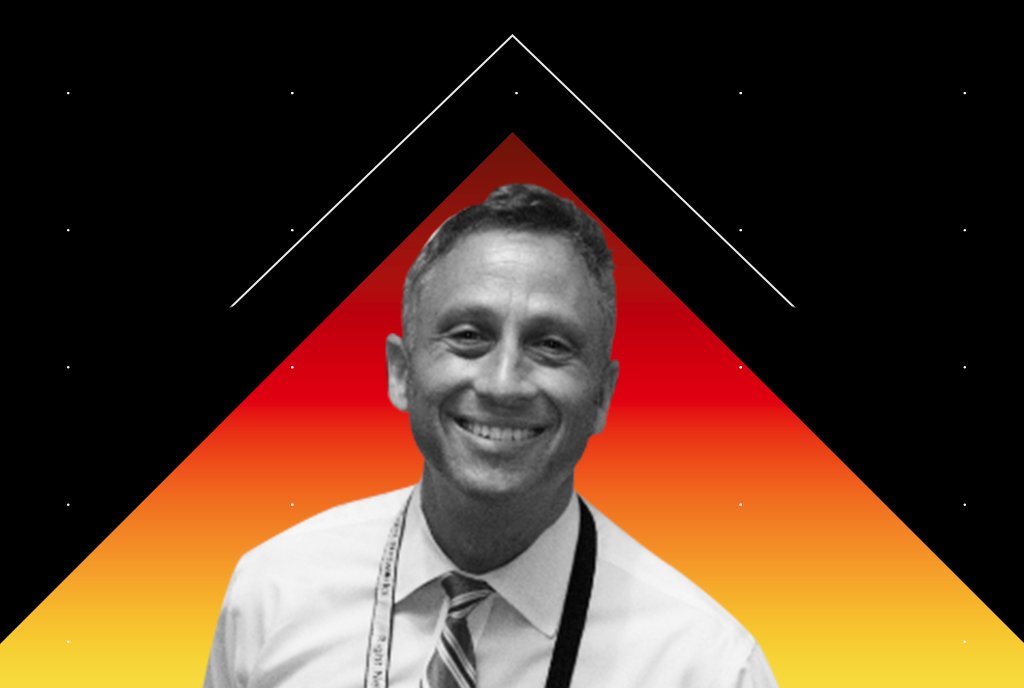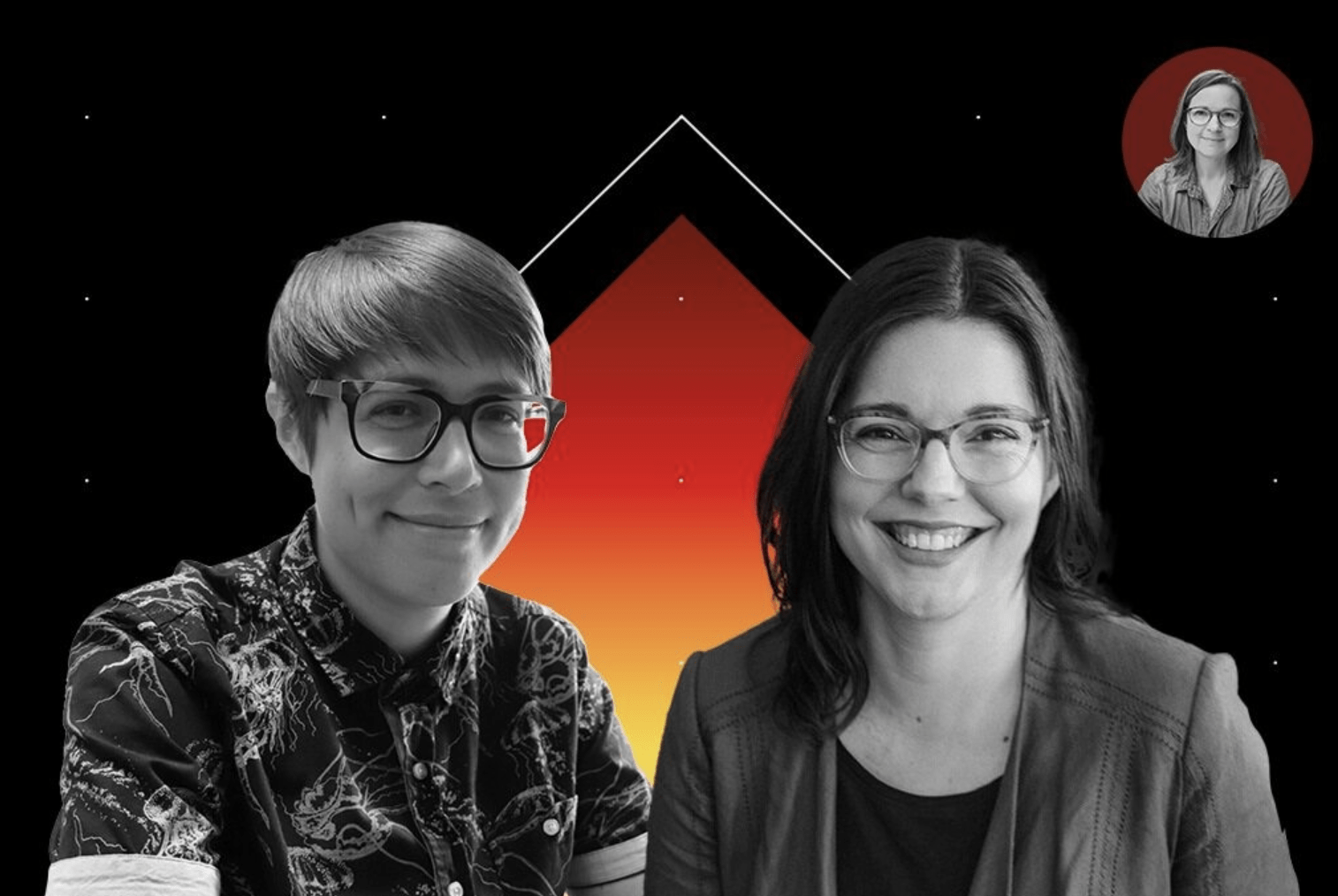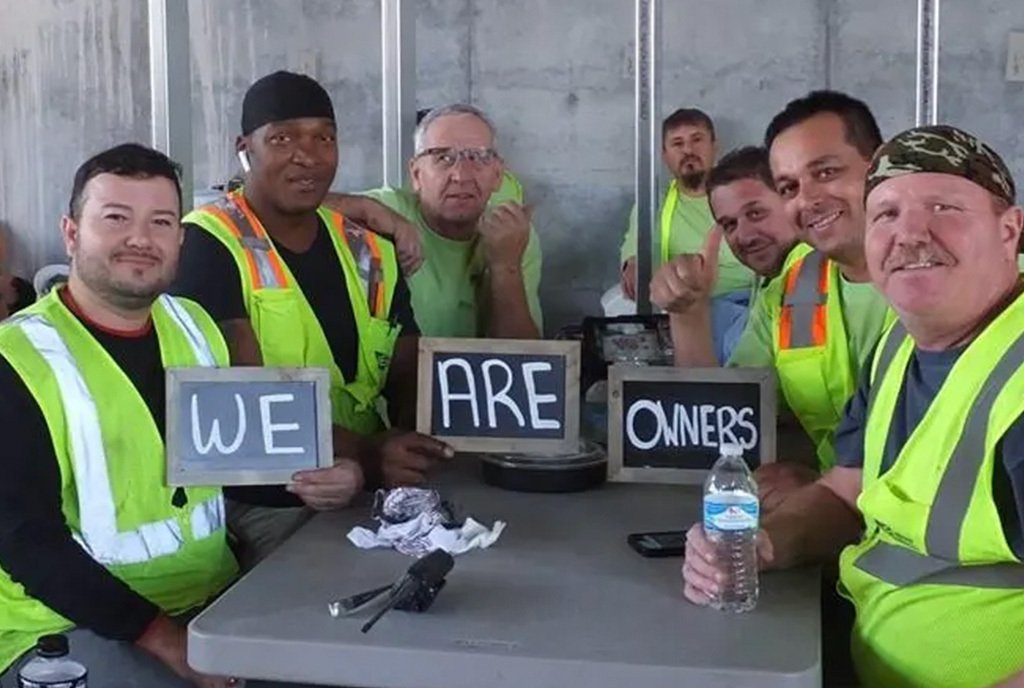

It seems like ages ago, but last November, 80 foundation representatives, community developers, and government officials gathered in Chicago for a conference called Urban America Forward. In a summary report released afterward, the first paragraph ends as follows: “Urban America Forward program content is grounded in two principles: (1) racial equity is achievable through systems change, and (2) practitioners’ efforts are bolstered by engaging in a space where they can share approaches taken to disrupting systems that create and reinforce segregation, economic oppression, and disparities in education, health, housing, and other areas.”
Seen in the light of the national uprising since May 25th—spurred by the police and vigilante killings of George Floyd, Breonna Taylor, Ahmaud Arbery, and many others— the response seems tepid, with the phrase “systems change” used to describe incremental steps at best. As my colleague Cyndi Suarez incisively noted last fall, “system thinking has become deracinated, devoid of its true power implications.”
The report lists four themes: 1) being a partner to community-driven solutions; 2) improving capital flow to disinvested neighborhoods; 3) leveraging federal and state tools to accelerate economic inclusion; and 4) bringing business to the table. Add those up and, well, system change is conspicuous in its absence.
How does one make sense of this? A few months ago, shortly before the US economy began to be shut down in response to the COVID-19 pandemic, I spoke with Derek Douglas, vice president of civic engagement and external affairs at the University of Chicago, which hosted the conference and where Douglas has worked for the past eight years. Prior to his current position, Douglas served on the White House Domestic Policy Council as Special Assistant to President Barack Obama and had once served as Assistant Counsel at the NAACP Legal Defense and Education Fund.
Douglas attended that conference. Noting he spoke for himself, not the conference, Douglas remarked, “I could give you my view. The big hard truth is our nation’s history of racial discrimination going all the way back to slavery, the original sin if you will. And how, over time, different decisions have been made to reinforce the consequences of the original sin…. We have to recognize how we got to where we are.”
When asked why place-based strategies, such as the ones advocated by conferences like Urban America Forward had largely fallen short, Douglas responded:
There are two big reasons why we haven’t made as much progress as we hoped. One is the place-based strategies are not of a scale that is commensurate with the hard truths we are trying to deal with. It is great to support the $20 million initiative to support local business, or hire a couple hundred people at my institution, but it is going to take multiples of that kind of resource and strategy. You can do some nice things for sure, but in general, the scale has not been…commensurate with the challenge.
Second, in order for place-based [interventions] to be inclusive, the community has to be integrated into the ideation of what we’re trying to do, into the planning, and into the implementation and they have to participate in the benefits. It can’t be their institution doing something to the community.
Douglas notes that a large part of the focus of his tenure at Chicago centers on addressing “this notion of civic infrastructure or community capacity. We haven’t done enough to invest in the community infrastructure of our neighborhoods.”
Enter COVID-19
The pandemic arrived well before the University of Chicago had completed its envisioned “UChicago Local 2.0” strategic plan. In response to the crisis, in late March, the University of Chicago announced a program to provide emergency support and address some of the immediate needs of local residents, businesses, and community-based nonprofits on the South Side as they navigate the COVID-19 pandemic.
The university’s effort basically contained two components, both aimed at supporting the nine surrounding mid-South Side neighborhoods that have been the focus of its community partnerships. In particular, the university focused on two areas: 1) meal distribution for residents and 2) aid to small businesses and nonprofits.
Called the Community Support Initiative, the emergency program was launched on Monday, March 30. In what became known after the fact as its “first phase,” a total of about 260,000 meals were served to residents over 10 weeks, and $1.3 million in emergency cash grants of up to $7,500 per organization were made to over 200 small businesses and 79 nonprofits. The program’s second phase began in mid-June. The effort includes providing 1,000 meals a day to seniors and other vulnerable populations in partnership with locally owned catering businesses, as well as free consulting support to small business through the university business school’s small business support program and continuation of the Community Accelerator Program for nonprofit partners, albeit with services and support delivered virtually.
Douglas observes that it was the university’s relationships with community groups built up over the previous decade that allowed the university to respond in this manner.
“If we had not been doing the work of civic engagement and not had the infrastructure set up, we would not have been able to do what we did when COVID-19 hit,” Douglas says. He adds that pre-existing relationships enabled the university to “move more quickly,” with emergency supports “up and running in two weeks,” far faster than the government could move.
“Our early work enabled us to meet the moment when the pandemic hit,” Douglas observes. Douglas adds that, “Our work on COVID-19 has taken our relationship with the community to another level in terms of closeness, trust, and valuing us. It was incredibly well received and incredibly appreciated that the university was able to step up so quickly.”
Responding to the Popular Uprising on Race
Douglas notes that the university’s founding was relatively progressive. William Rainey Harper, the schools’ founding president, committed the university to supporting the city of Chicago. In the early 20th century, the school backed the settlement house movement, marked by its support of Hull House that served immigrants, founded by Jane Addams.
But Douglas acknowledges that early period was followed by “urban renewal,” a period during which Douglas concedes the community’s trust was broken. If COVID-19 was marked by school mobilization, the response of the University to the uprising has been centered more on “self-reflection,” Douglas says. This includes acknowledgement of the university’s history and having conversations with community members where past wrongs are acknowledged.
Scale, Agility, and Staying Power
As NPQ observed last summer when covering a 2019 report on anchor institutions published by the Initiative for a Competitive Inner City and the Kresge Foundation, the lack of community involvement in place-based work is a widespread challenge. As the research team led by Kim Zeuli put it, “Anchor strategies are business strategies and, therefore, typically do not emphasize resident empowerment or include processes for getting more community members involved in the revitalization process.”
It is a challenge facing not only anchor institutions, but government as well. As Douglas relates, “When I was in the White House and I traveled around the country, one of the big things I would often hear from mayors and community leaders is, ‘I love the vision. It is tremendous. I love all of these programs, [but] I have one person in my planning department; we have no organizations that can get those resources. We don’t have the capacity to apply, get the resource, and implement it at scale.’”
At the University of Chicago, Douglas has tried to apply these lessons. The University has implemented a suite of what might be labeled “anchor institution policies,” which are featured on its UChicago Local website. That is, it has sought to buy more goods and services locally, hire more staff locally, and encourage more staff to live locally. Indeed, the university is focusing on a nine-neighborhood region that surrounds the campus, which Douglas calls the mid-South Side, which consists of the neighborhoods of Douglas, Grand Boulevard, Greater Grand Crossing, Hyde Park, Kenwood, Oakland, South Shore, Washington Park, and Woodlawn.
On a website, the university touts, “Since its implementation in 2014, UChicago Local has worked with more than 300 South Side businesses to help grow their capacity and connect with opportunities at the University….In addition, there are more than 1,300 community entrepreneurs belong to the Polsky Exchange, the Polsky Center for Entrepreneurship and Innovation’s 34,000 square foot coworking space and startup incubator.”
The University of Chicago also helped found Chicago Anchors for a Strong Economy (CASE), which claims in 2017 to have directed $31 million in contracts to firms owned by people of color citywide, resulting in the creation of 120 jobs.
Sign up for our free newsletters
Subscribe to NPQ's newsletters to have our top stories delivered directly to your inbox.
By signing up, you agree to our privacy policy and terms of use, and to receive messages from NPQ and our partners.
But the bigger challenge is to strengthen community capacity. A central component of this effort is the university’s Community Program Accelerator. The idea of the community programs accelerator, notes Douglas, is to help community-based organizations “become sustainable, enduring organizations.” As of winter 2020, Douglas notes, the university had worked with close to 200 organizations and more than 1,500 individuals had attended its free workshops.
Only a percentage of those 200 community-based organizations get in-depth university support. A few organizations are admitted into the most high-intensive “core” category, which includes money, office space, and wrap-around services. An organization remains in the core for three years and perhaps two a year are admitted (meaning a total of five or six organizations are “in residence” at the accelerator at any one time).
A second tier is the “associate” level and involves intensive technical assistance support for a year, sometimes renewed for a second year. Douglas estimates that seven to 10 organizations are in the “associate” tier. A third category are “special projects” that are short-term (typically, 3–6 months) and focus on key deliverables. Douglas estimates 20 or so organizations fit in that category. “When you put it all together, you’re 35–40 range, and we’re trying to scale that it up,” Douglas adds.
One challenge with a focus on building community capacity is assessment. Douglas says the university relies on both quantitative and qualitative indicators. Quantitative indicators might include increases in organizational budget, staff levels, and people served. Qualitative measures involve conversations with community leaders.
Douglas explains, “We still have town-gown challenges and work with issues of trust every day.” But Douglas says partnerships make a difference. “I have had some of our toughest critics—say, Derek, “This is for us. We can’t thank you enough.’” Douglas adds, “It has been one of the most important programs we have had for building trust.”
University of Chicago’s Racist Legacy
These days, the University of Chicago seeks to be a partner with surrounding Black neighborhood groups. But historically that certainly was not the case. As Lee Harris writes in the Chicago Maroon:
Through a number of intermediary community organizations and property owners’ groups, and through its own land buying practices, the University played no small part in shaping “the white island” it occupied.
In the ’30s and ’40s, the University indirectly funded racially restrictive covenants, legally enforceable contracts to prevent selling property to non-white people, through various “community interests” projects. While the University attempted to be discreet about its real estate holdings and funding of “revitalization” projects, its influence was well-known. The Chicago Defender, Chicago’s preeminent black newspaper, reported that “many of the real estate owners in that area refer to restrictive covenants as ‘the University of Chicago Agreement to get rid of Negroes.’”
Today, distrust persists. Last year, Sophia Sarantakos, a social work doctoral student at the University of Chicago observed that, “As a predominantly white institution with one of the largest private security forces in the world, UChicago often responds to non-white faces on campus with suspicion.”
Efforts to Deepen the Work: Crafting “UChicago Local 2.0”
The university has developed relationships with Black neighborhood businesses and nonprofits, but university leaders acknowledge there remains considerable room for improvement. In fact, by early 2019, university leaders had launched a process to transition from what they call “UChicago Local 1.0” to “UChicago Local 2.0.”
Douglas explains that he helped create UChicago Local 1.0 after he arrived at the university in 2012. “When I came, we didn’t have a program at all,” Douglas explains, although some elements of what has become its approach, like the university’s employer-assisted housing program, have a longer history.
Douglas says a key question was “How do we build up the programming, infrastructure, and culture to leverage our local businesses (citywide and intensely in the nine-neighborhood community] to hire more locally and get jobs at the university or in our vendor network?” Douglas adds that “We built out a culture and we started to see significant progress.”
That was 1.0. But on the pathway to 2.0, Douglas notes, some key differences have emerged. One is how the program is being put together. Version 1.0 developed much as Zeuli and her team describe as typical—in other words, internal university staff designed the programs. With Version 2.0, the decision was made “to take what we do to the community and get experts to weigh in. What’s good? What needs to be improved? What are things we aren’t considering that we should be doing?”
To answer these questions, a community development working group of over 60 community reps was formed. “It wasn’t just organizations that we are friendly with. We intentionally included some of the biggest critics on that group, because they are part of the community and their voice needs to be heard as well,” Douglas explains.
The 60 members were divided into three subcommittees and met for four months and completed their work in June 2019. One committee evaluated the university’s “buy local” efforts, one reviewed its “hire local” efforts, and one reviewed its “live local” efforts.
Out of the combined committee, too, emerged the idea that the university had to make partnership a fourth pillar of its approach—now called “partner local.”
Some other key findings include the following:
- Returning Citizens: “There were some things pointed out where we didn’t have strong or visible programming. One was in the whole area of returning citizens. We actually don’t have a policy against returning citizens. What we heard from the community, unless the university is more welcoming, no returning citizen will think that the university is a place they will go. Is there something we can do proactively to create the number of returning citizens that can be hired or in our vendor network?”
- Expedited Payment: The university typically pays out 90 days from being invoiced, but this does not work for local small businesses of color in the neighborhoods. The university is now considering a quicker 30-day turnaround to pay these businesses.
- Revolving Loan Fund: Douglas noted that there was a lot of demand for the university to form a revolving loan fund to support local projects. So, the university is looking to its business school and local community development financial institutions (CDFIs) to explore if the university can develop a co-investment fund to provide low-interest loans to support redevelopment in the school’s nine surrounding neighborhoods.
The goal, Douglas adds, is to “create new tools and new elements that can broaden when people think about the university’s anchor role. We think there is a way to broaden beyond live local/local purchase/local hire.”
Moving Forward: The Community Engagement Choice
It is no secret that nonprofit universities, even those with a large endowment like the University of Chicago—whose endowment was $8.5 billion as of June 30, 2019—face considerable strain. “Higher ed is being hit very hard. It would not be hard for a university to say we’re cash strapped” and cut community programs, Douglas acknowledges. Indeed, while the news likes to feature “woke” corporations that are supporting Black Lives Matter and related groups, Douglas says he’s heard from a number of companies who have cut back in their support of community programs.
At the University of Chicago, the school is planning a kind of hybrid reopening, an effort that does require a lot of organizational energy. School will open in late September, with in-person classes ending before Thanksgiving and the last couple of weeks of fall quarter done remotely from home. Some classes in the period before Thanksgiving will be done in-person, but no in-person classes will have more than 50 students. Even classes that are in-person will have a remote component. All teachers will have the option to choose to teach solely online if they prefer that, and Douglas expects at least a quarter of faculty to avail themselves of that option.
Still, Douglas says the pandemic and popular uprising have only reinforced the importance of the University of Chicago’s community programs. Part of the strategy, Douglas says, has been to “connect our engagement to the core fabric of the university, so it is not as easy to say you can chop that off.” Douglas says the pandemic has made it harder to implement some aspects of the original UChicago Local 2.0 plan, but he does expect some aspects to launch in fall 2020 despite the pandemic. Douglas also collaborated this year with his counterparts at King’s College in London, England, and the University of Melbourne in Australia to produce an indicator framework to evaluate community engagement work. with metrics in such areas as carbon emissions reduction, resource allocation, and embeddedness of partnerships in classroom and research work.
Douglas acknowledges that the key will be in staying power and consistency. It is great to mobilize a campus for an emergency. But the goal, Douglas emphasizes, is to make sure the work is not “a blip in time” and ensure the investment and work stay at a heightened level for the long run.


